mobile View, to the German Version tap the flag
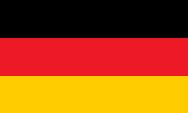

- Republic of Iraq
- parliamentary republic
- own name: Al-Jumhuriya al'Iraquia
• Flags
• Historical Flags
• Meaning/Origin of the Flag
• Coat of Arms
• Meaning/Origin of the Coat of Arms
• Aircraft Roundel
• Map
• Numbers and Facts
• History
• Origin of the Country's Name
• other Flags
· Kurds
· Yazidi
· Turcomans
· Christians
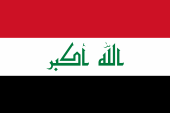
National and merchant flag,
ratio = 2:3,
Source, by: Wikipedia (DE)






Flag of the Army,
ratio = 2:3,
Source: By MrPenguin20 [CC BY-SA 3.0], via Wikimedia Commons




Flag of the Air Force,
ratio = 2:3,
Source: By MrPenguin20 (Own work. Based on flag visible here.) [CC BY-SA 3.0], via Wikimedia Commons




Flag of the Navy,
ratio = 2:3,
Source: By MrPenguin20 (Own work) [CC BY-SA 3.0], via Wikimedia Commons




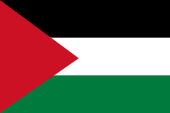
1917–1921,
National flag,
Source, by: Die Welt der Flaggen



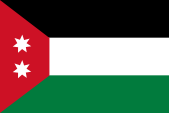
1921–1958,
National flag,
Source, by: Die Welt im bunten Flaggenbild



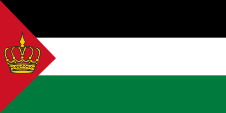
1921–1958,
Standard of the King,
ratio = 1:2,
Source, by: Die Welt im bunten Flaggenbild



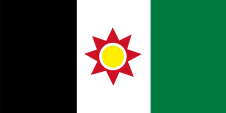
1959–1963,
National flag,
Source, by: Flags of the World



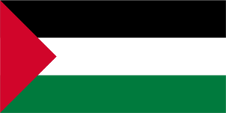
1943–2003,
Flag of the Baath Party,
Source, by: Wikipedia (DE)



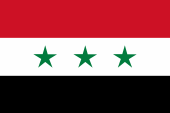
1963–1991,
National and merchant flag,
Source, by: Corel Draw 4





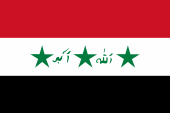
1991–2004,
National and merchant flag,
Source, by: Wikipedia (DE)





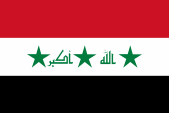
2004–2008,
National and merchant flag,
Source, by: Wikipedia (DE)






Today's flag of Iraq was introduced on 22nd of January in 2008. It shows three horizontal strips in the colors red, white and black and in the white center stripe in green stylized Arabic letters the words "Allahu Akbar " (Allah is Great). The flag is the last of its kind, which embodies the gradual abolition of the flag of 1963. This flag showed three green stars in the white center stripe. In result of a failed coup d'état in the year 1963 came a new government into might, which aimed for an unification with Syria and Egypt. That's why was adoped (just as in Egypt and Syria) a new flag on the 31st of July in 1963 which was orientated in the model of the from Egypt descending Arabian Liberation Flag: horizontally red, white and black striped with three green stars in the white middle stripe. The three stars stand for Iraq, Egypt and Syria, which wanted in 1963 to join to the United Arabic Republic (UAR). The stars got maintained in the Iraqi flag even after the end of the UAR project. On 14th of January in 1991 – directly before the Second Gulf War – were added by order of President Saddam Hussein the words "Allahu Akbar" (Allah is great) between the three green stars in the white middle stripe in green kufic letters. Saddam Hussein was overthrown in 2003 by a military intervention of the United States and its allies. The flag with the three stars and the "Allahu Akbar" in kufic script remained valid until 2004. On 28th of June in 2004, the flag was changed a little bit, by altering of the in kufic script written words "Allahu Akbar" into a more stylized typeface. The current flag was introduced on 22nd of January in 2008 by removing the stars. The colour triad of red, white and black is referred as Panarabian colours. This is not entirely correct. The three colours go back to the late Gamal Abd el-Nasser (1918–1970), Egyptian military officer, politician as well as later the state's president and prime minister, and most important representative of the Arabian nationalism and panarabism. After the national revolution of 1952 the Arabian Liberation Flag was introduced in Egypt, which represented those ideals. It was, at least in choice and arrangement a model for many other Arabian states and state alliances. The colours stand always for the revolution (red), the future (white) and the past (black). The colours have their roots in the flag of the Arabian Revolt during the First World War. Yet the colours of the Arabian Revolt (Arabian Movement) include even green. The colour quartet of four, green, white, black and red is a special Arabian colours symbol, the Panarabian colours. The (Pan)Arabian colours were officially introduced by the Sheriff Hussein of Mekka – of the lineage of the Hashemides – as colours of the Arabian Movement during the First World War at the secession of the Kingdom of Hedjas from the Ottoman Empire. The flag of Hedjas served as pattern. The colours have the following meaning: Red is the colour of Omar, the second calif; white stands for the Omajiades, a calif-dynasty, which goes back to the fifth calif Moawija I.; green stands for the Fatimides, a ismailitic-shiit calif-dynasty, which goes back to the fourth calif Ali; and black stands for the Abbasides, a calif-dynasty, which goes back to the calif Abbas I. Red is also the colour of the Hashemides, an Arabian sovereign-dynasty, which probably goes back to Hashim ibn Abd al-Manaf, the grandfather of Mohammed. Green is in addition generally the colour of Islam, and does not refer only to the Arabian countries. The first flag of the Iraq was an unofficial flag, and was used from the against the Ottoman Empire fighting Arabs. It goes directly back to the flag of the State of Hedjas, which placed itself on the top of the Arabian rebellion. In the 1921 the Iraq came under British control, because United Kingdom got assigned those former Ottoman territory as a mandate of the League of Nations. The British established the Kingdom of Irak, and deployed an Hashemite on the throne, a member of the ruling dynasty of Hedjas. The flag of the kingdom showed likewise the colours of the Arabian Revolt, however in an other sequence. The to the pole pointing side of the black, white and red lengthwise striped flag showed a green trapezoid with two seven-jagged white stars. The seven jagged star goes back to the Hashemites. It should stand for the seven suras of the Koran but for the seven provinces of the from the Hashemites demanded land, too (Iraq, Syria , Lebanon , Palestina, Jordan , Hedjas and Asir). In the year 1958 the monarchy was unseated by a military coup d'état and the republic was proclaimed. Because of this was adoped a new flag in the year 1959. It was now black, white and green vertical striped with an eight-jagged red star in the white field with a golden disk in the middle. The colors of the flag are today defined as follows: red = HEX: #cd1125, RGB 205|17|37, CMYK 0|92|82|20, Pantone 186; green = HEX: #017b3d, RGB 1|123|61, CMYK 99|0|50|52, Pantone 348.
Source:
Die Welt der Flaggen,
Flaggen und Coat of arms of the Welt,
Flaggen Wappen Hymnen,
Wikipedia (DE),
Wikipedia (EN),
Volker Preuß


1965–1991,
Coat of arms of Iraq,
Source: nach by:
Corel Draw 4,
modyfied by: Volker Preuß

1991–2008,
Coat of arms of Iraq,
Source: nach by:
Corel Draw 4,
modyfied by: Volker Preuß

since 2008,
Coat of arms of Iraq,
Source: nach by:
Corel Draw 4,
modyfied by: Volker Preuß

The coat of arms of the state was introduced in 1965. It shows the eagle of Saladin with a blazon, that carries the colours of the land, and with this the colours of the failed UAR. The inscription in kufian font reproduces the name of the state. The coat of arms was changed in result of the change of the flag in the years 1991, 2004 and 2008.
Source:
Flaggen Wappen Hymnen,
Volker Preuß

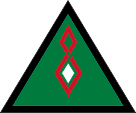
1931–2004, since 2019,
Aircraft Roundel,
Source, by: Wikipedia (EN)
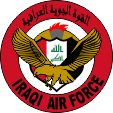
2004-2019,
Aircraft Roundel,
Source: vectored by FOX 52, CC BY-SA 4.0, via Wikimedia Commons

Location:
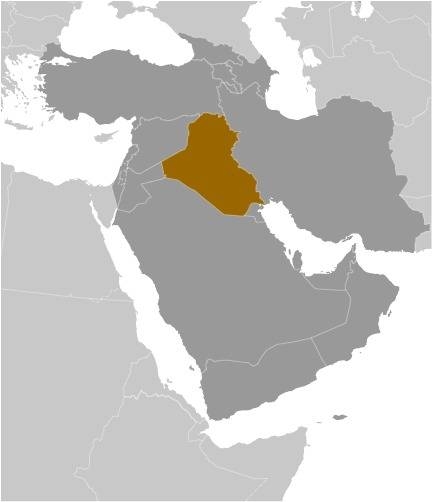
Source: CIA World Factbook
Map of the country:
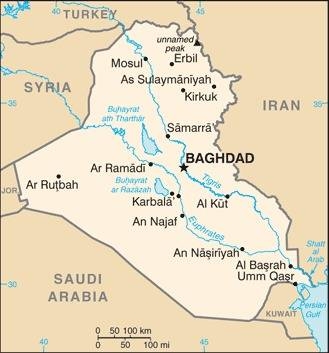
Source: CIA World Factbook

Area: 167.617 square miles
Inhabitants: 41.000.000 (2021), thereof 80% Arabs, 15% Kurds, 5% Turcomans, 1,5% Assyrians/Arameans
Religions: 60% Shia Muslims, 32% Sunni Muslims, 3% Christians, Yazidis
Density of Population: 245 inh./sq.mi.
Capital: Bagdad, 6.719.476 inh. (2018)
official Languages: Arabian, Kurdish
other Languages: Persian, Assyrian, English
Currency: 1 Iraq Dinar (IQD, ID) = 1 000 Fils
Time Zone: GMT + 3 h
Source:
Wikipedia (DE), Volker Preuß

4th millenary B.C. · Sumerian Empire
3rd millenary B.C. · Akkad Empire
1800–600 B.C. · Assyrian Empire
1700–1530 B.C. · Babylonian Empire
539 B.C. · Persian conquest of Babylonia
331–323 B.C. · to the Empire of Alexander the Great
312–140 B.C. · to the Empire of the Seleukides
141 B.C.–224 A.D. · part of the Parthian Empire
224–651 · part of the Empire of Sassanides
since 636 · Arabian conquest, penetration of the Islam
762 · Bagdad becomes capital of the Arabian Califate
1258 · Mongolian conquest
1534 · the Turk conquest Bagdad
1638 · the whole area of the today's Iraq comes to the Ottoman Empire
1914–1915 · British conquest
1921 · United Kingdom gets Iraq (the Ottoman provinces of Mossul, Bagdad and Basra) assigned as a mandate of the League of Nations, foundation of the Kingdom of Iraq, enthronement of Faisal I. (Hashemite Dynasty)
30th June 1930 · nominal independence, Iraq remains a British zone of influence
1933 · Ghasi I. (son of Faisal) takes the throne
1939 · Faisal II. (son of Ghasi) takes the throne
24th of February 1955 · Iraq joines the Bagdad Pact and gets the full sovereignty, however United Kingdom is allowed to keep military bases in Iraq
14th of July in 1958 · military coup d'état under colonel Kassem, overthrow of the monarchy, assassination of the king and the premier, proclamation of the republic
1959 · withdrawal from the Bagdad Pact (new name: CENTO), United Kingdom has to evacuate it's bases
1959 · attempted coup d'état by the Baath Party
1961 · Kuwait conflict, Kurd conflict
1963 · attempted coup d'état by the Baath Party, assassination of Kassem
1968 · the Baath Party comes into power
1979 · Saddam Hussein becomes president
1980 · outbreak of the 1st Gulf War (Iraq against Iran)
20th of August in 1988 · cease fire between Iraq and Iran
1989/1990 · tensions with Kuwait because of the Oil, the USA declare by April Glaspie (ambassadress of the USA in Iraq): "The USA will not take position about the quarrels between the Iraq and Kuwait"
2nd of Aug. 1990 · Iraq occupies Kuwait
15th of January 1991 · the USA declare the war against Iraq
17th of January in 1991 · outbreak of the 2nd Gulf War (USA against Iraq)
28th of Febr. 1991 · surrender of the Iraq
1994 · recognition of Kuwait's sovereignty by the Iraq
1996 · parliament's elections, victory for the governing Baath party
1996 · Kurd revolt
2003 · outbreak of the 3rd Gulf War (USA against Irak), the Iraq gets illegally attacked and occupied by USA, United Kingdom and Poland, the Iraq becomes an US-American protectorate
2004 · Saddam Hussein is captured
28th of June in 2004 · granting of nominal self administration (provisional constitution)
October 2005 · new constitution
30th of December in 2006 · Saddam Hussein becomes condemned to death after a show trial and executed under very questionable conditions
2008 · withdrawal of the Polish and British troops
2009–2010 · withdrawal of the US-American combat troops, 50.000 trainers and military advisers remain in the country
2014–2017 · the Islamic State conquers areas in the north-east, followed by a war of liberation
2020 · the Iraqi parliament decides to withdraw all US-American troops
2021 · withdraw of all US-American troops, military advisers remain in the country
Source:
Atlas zur Geschichte,
Wikipedia (D),
Discovery '97,
Weltgeschichte

The name of the country goes back to the Babylonian word for 'origin'. It was apparently chosen to point to the cradle of civilization, whose ancient cities, such as Ur, are found here in Mesopotamia.
Source:
Handbuch der geographischen Namen

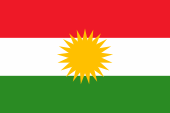
Flag of Autonomous Iraqi Kurdistan,
ratio = 2:3,
Source, by:
Wikipedia (DE)






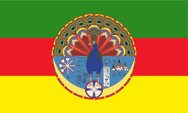
Flag of the Yazidis,
Variant, not official,
ratio = 3:5




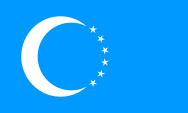
Flag of the Turcomans,
Source, by:
Wikipedia (DE)




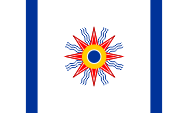
Flag of the Chaldeans (Christians of the Chaldean Catholic Church),
Source, by:
chaldeanwiki.com



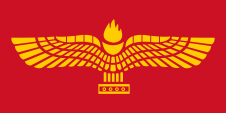
Flag of the Arameans



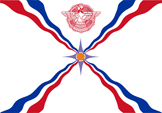
Flag of the Assyrians,
ratio – ratio = 7:10,
Source, by:
UNPO





![]()





























































